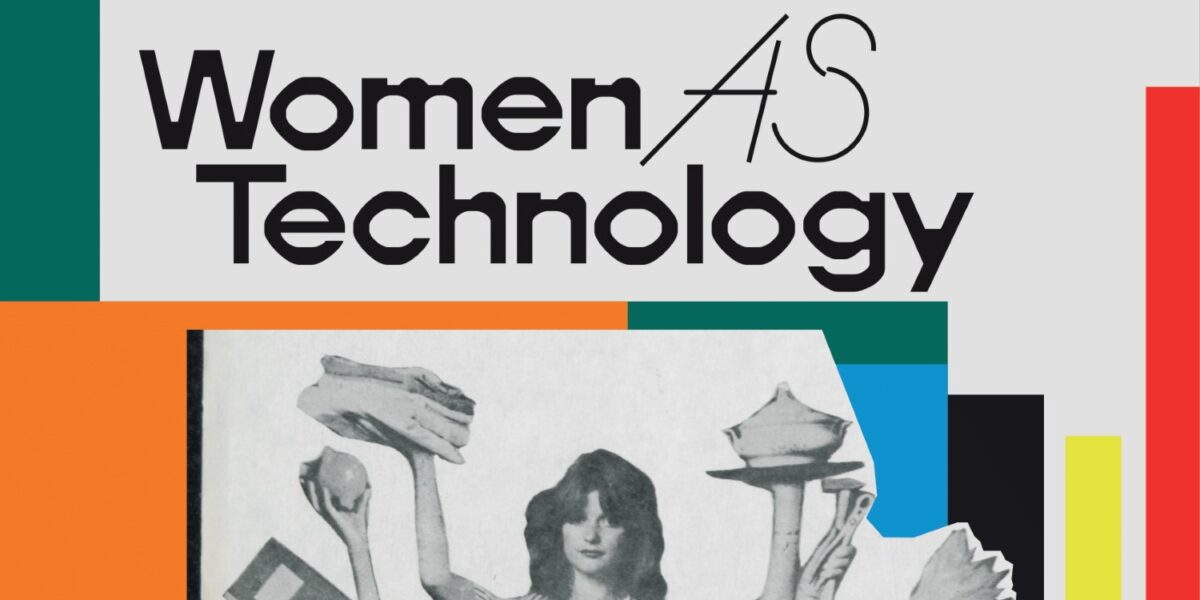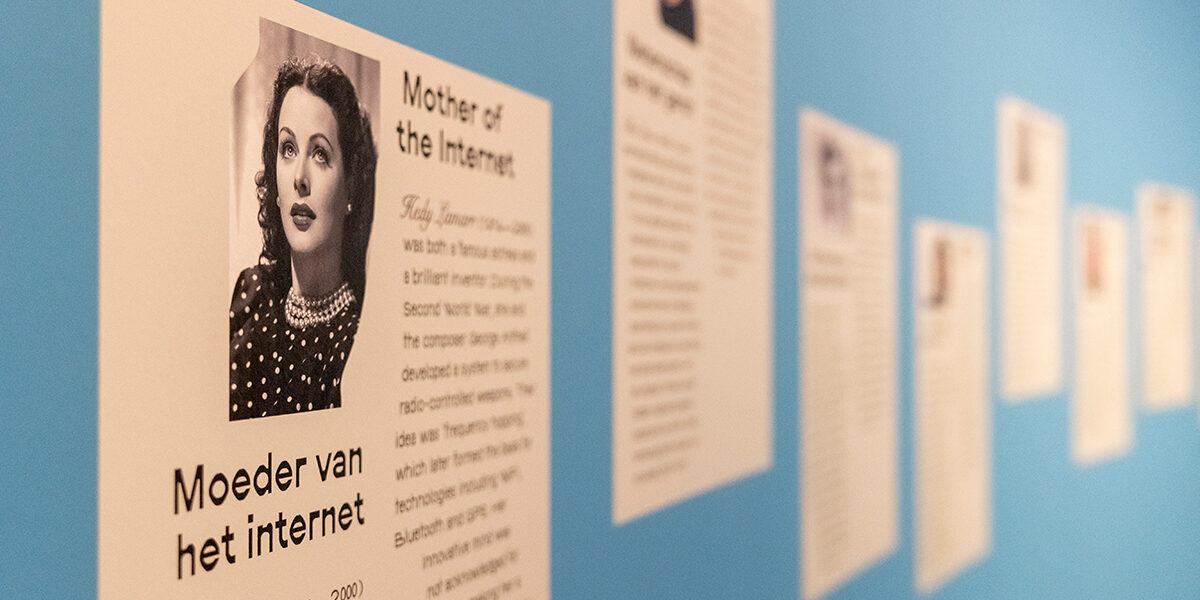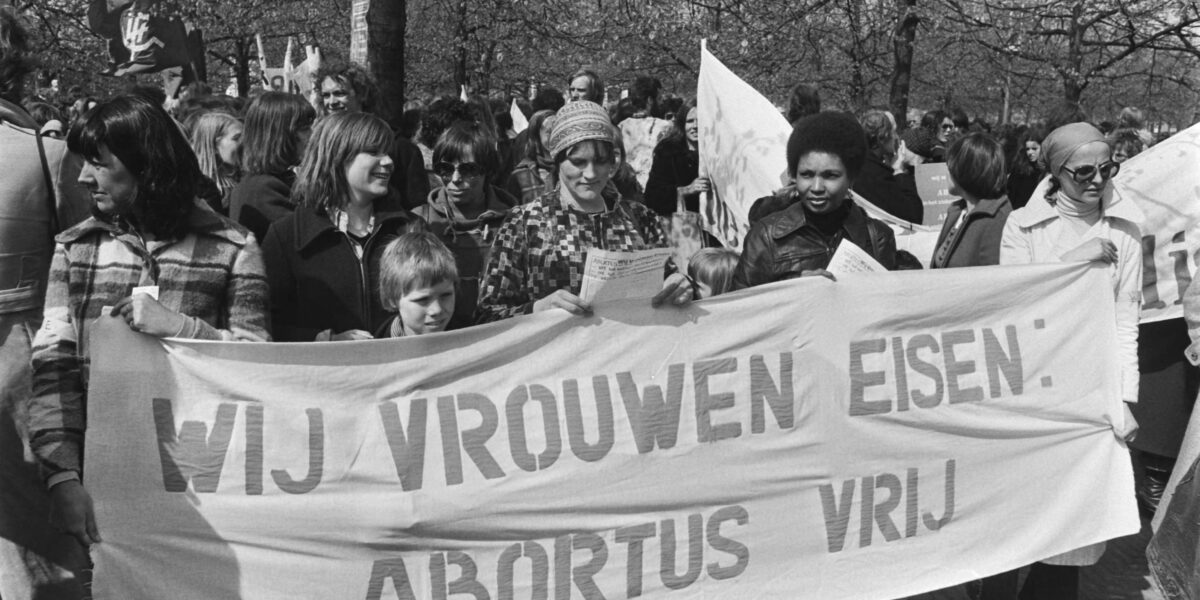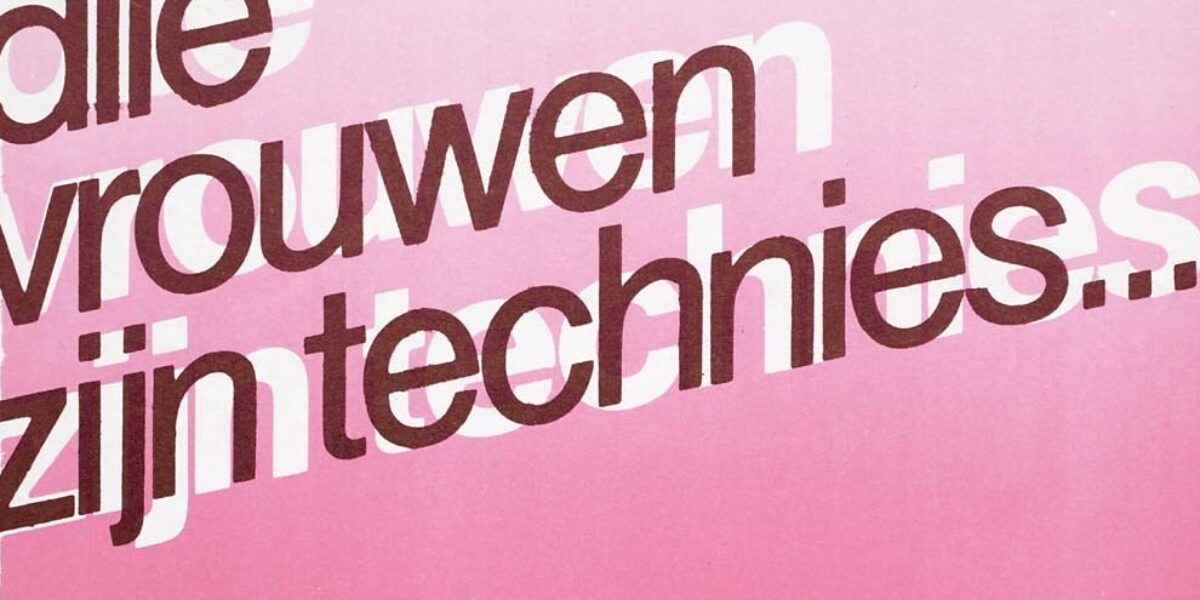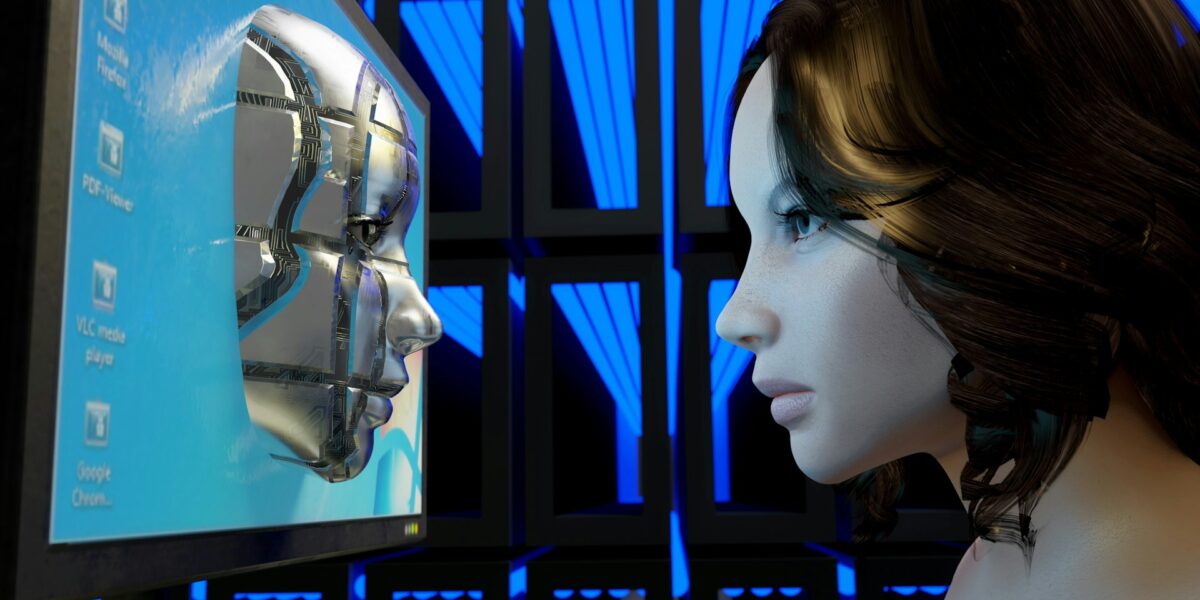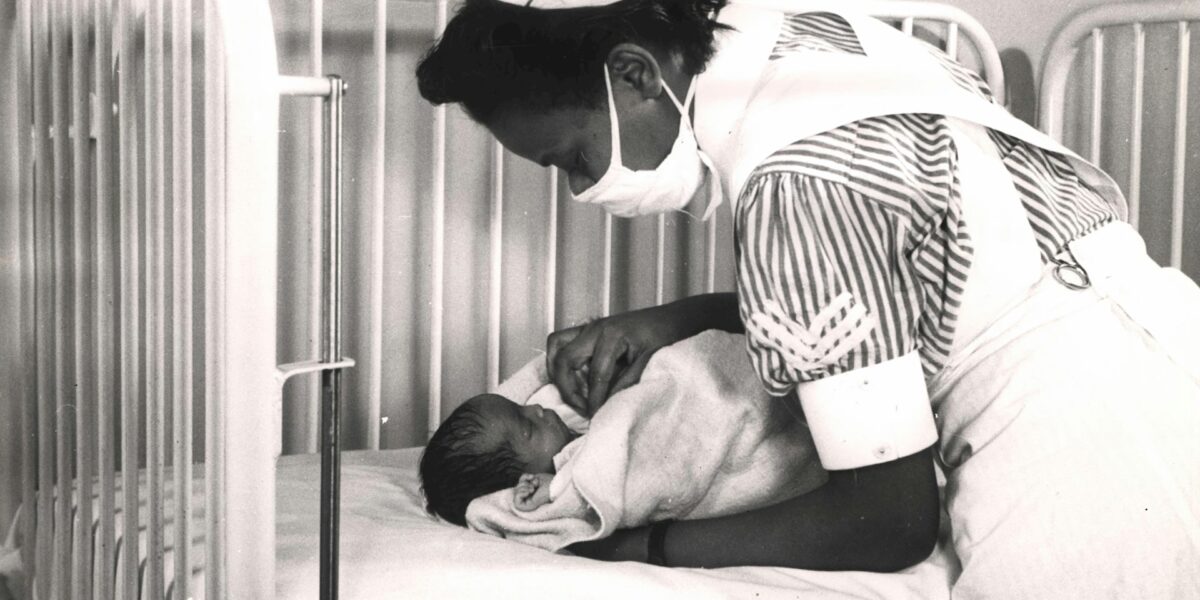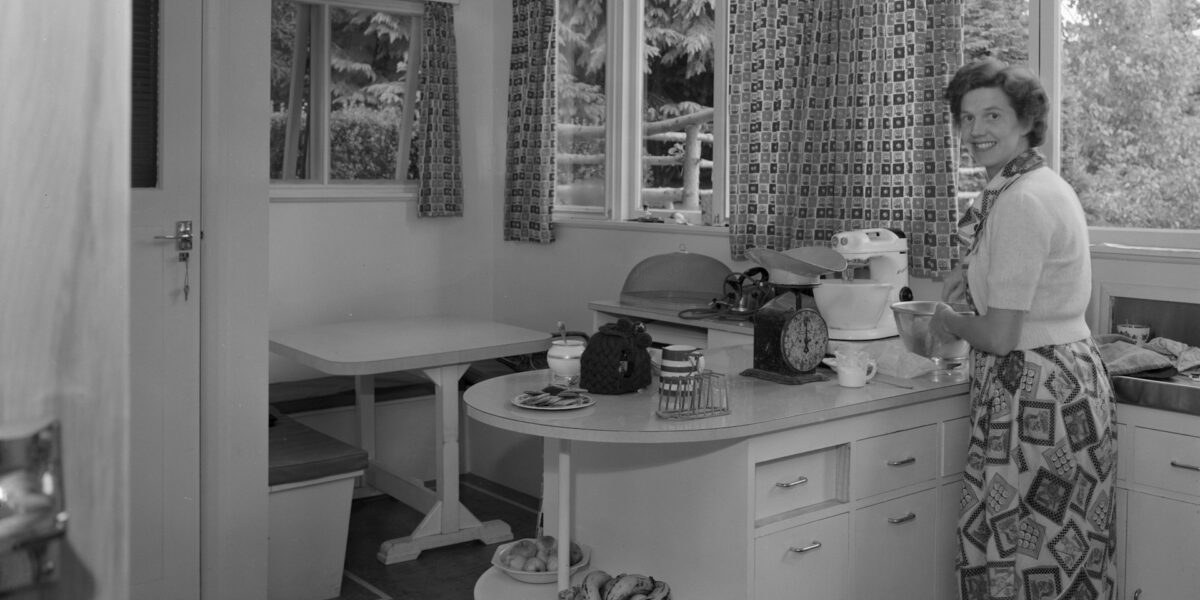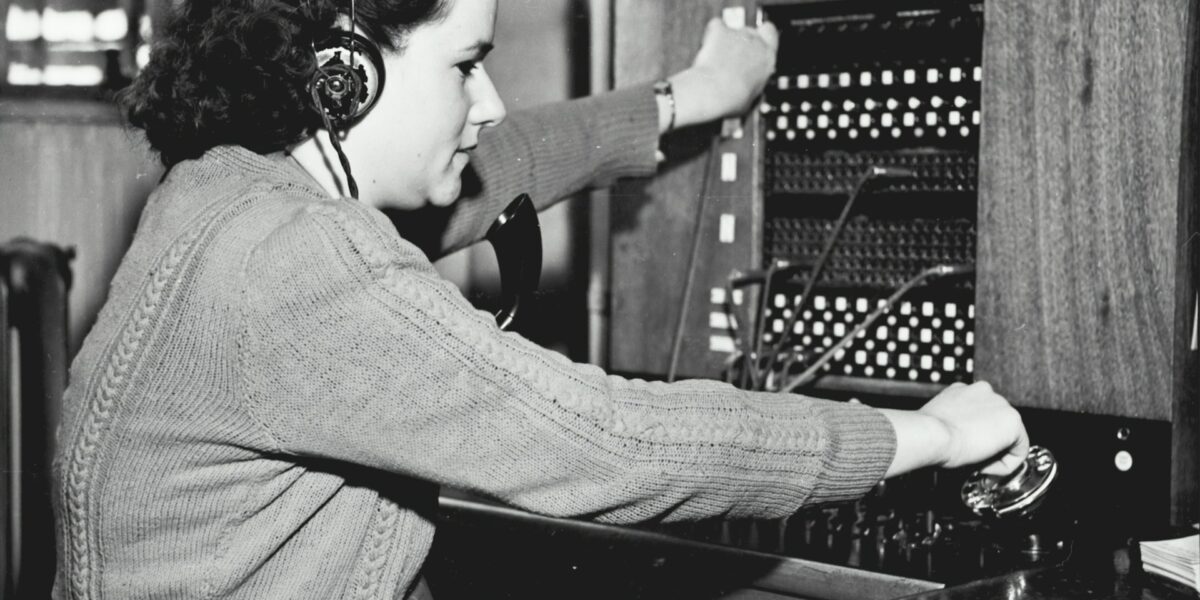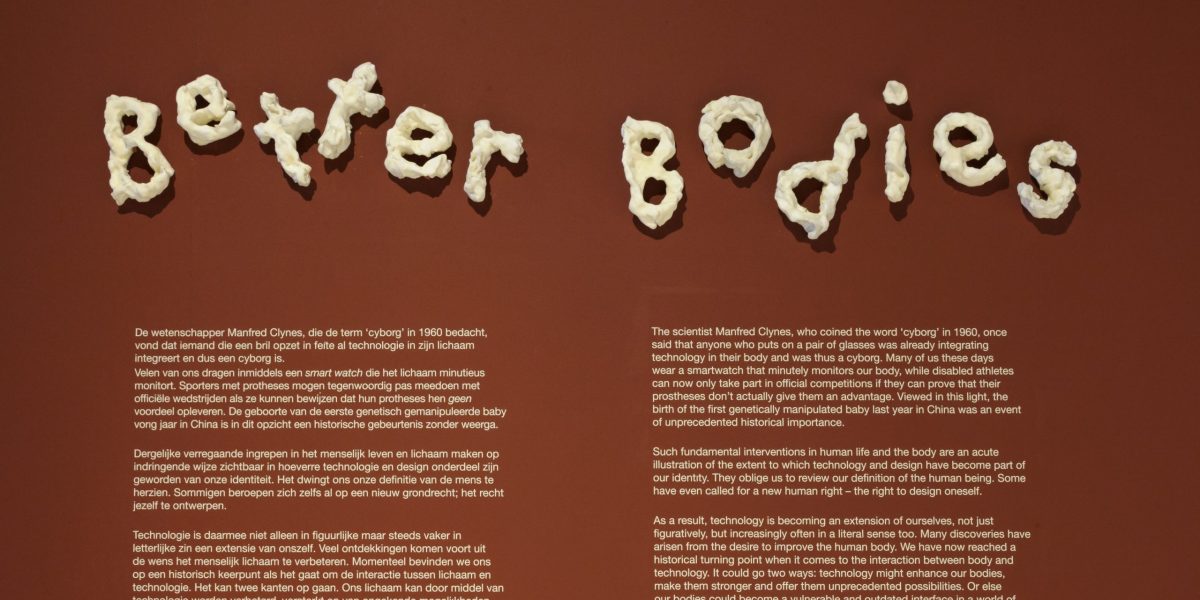Timeline development of technology
The exhibition Women as technology features a timeline of the themes of emancipation of women in the Netherlands, laws and regulations and development of technology. In this article, you will find a more detailed explanation of the theme development of technology.
1764–67
Spinning Jenny
The Englishman James Hargreaves (1720–1778) invented the ‘Spinning Jenny’, the first manually operated machine, which could spin eight threads at once, compared to the single thread produced on a traditional spinning wheel. It allowed yarn to be produced faster and more cheaply, making it an important development within the textile industry. The yarn was not strong enough, however, to be used for all purposes.
1776
First successful steam engine
The Scottish inventor James Watt (1736–1819) installed his steam engine in 1776. He worked steadily from 1763 to improve the machine, which had not previously been economically viable.
1776
First steam engine in the Netherlands
The first steam engine in the Netherlands was set up in Rotterdam, before being dismantled again not long afterwards
1775–79
Semi-automatic spinning machine
Another Englishman, Samuel Crompton (1753–1827) developed the ‘Mule Jenny’ from the Spinning Jenny and water frame. The new machine was steam-powered and could spin 48 threads at once. The spun thread was still wound by hand. By 1790, there were Mule Jennies capable of spinning 150 threads simultaneously, delivering a tremendous boost to the British textile industry.
1785
First power loom
The English inventor Edmund Cartwright (1743–1823) patented his ‘power loom’ in 1785. The machine was driven by water power and swiftly developed into a more automated loom.
1804
Jacquard loom
The jacquard loom, named for its French inventor Joseph-Marie Jacquard (1752–1834), used punch cards to weave complex patterns.
1822
First successful mechanical loom
In 1822, the Welsh inventor Richard Roberts (1789–1864) created the first successful mechanical loom. Although Edmund Cartwright (1743–1823) had been designing looms since 1779, his machines enjoyed only limited success, due to their convoluted drive mechanism.
1825
Speculum
The French midwife Marie Anne Boivin (1773–1841) developed a speculum in 1825 that could gradually be widened to provide a clear view of the cervix.
1837
Electric motor (direct current)
Although William Sturgeon (1783–1850) designed a direct current motor in England as early as 1832, the American Thomas Davenport patented an improved version in 1837 that was capable of powering light machinery. The cost of the batteries meant, however, that the device was not a commercial success.
1842
Invention of the pessary
The German doctor W.P.J. Mensinga (1836–1910) invented the pessary. The rubber-coated ring was originally intended to support a prolapsed uterus, but was swiftly used for contraceptive purposes too.
1842–43
Ada Lovelace
Ada Lovelace (1815–1852) collaborated with her fellow Briton Charles Babbage on his design for an analytical engine, the precursor to the modern computer. Lovelace realized that the machine was capable of more than mathematical calculations alone. It could, in fact, process anything expressible in symbols, including music and text. Her notes include an algorithm she wrote for the engine, which is why she is considered to be the first person to truly grasp the concept of programming – a revolutionary understanding at a time when computers did not yet physically exist. While her work went unacknowledged in her own lifetime, Lovelace is now viewed as a pioneer in both computing and science in general.
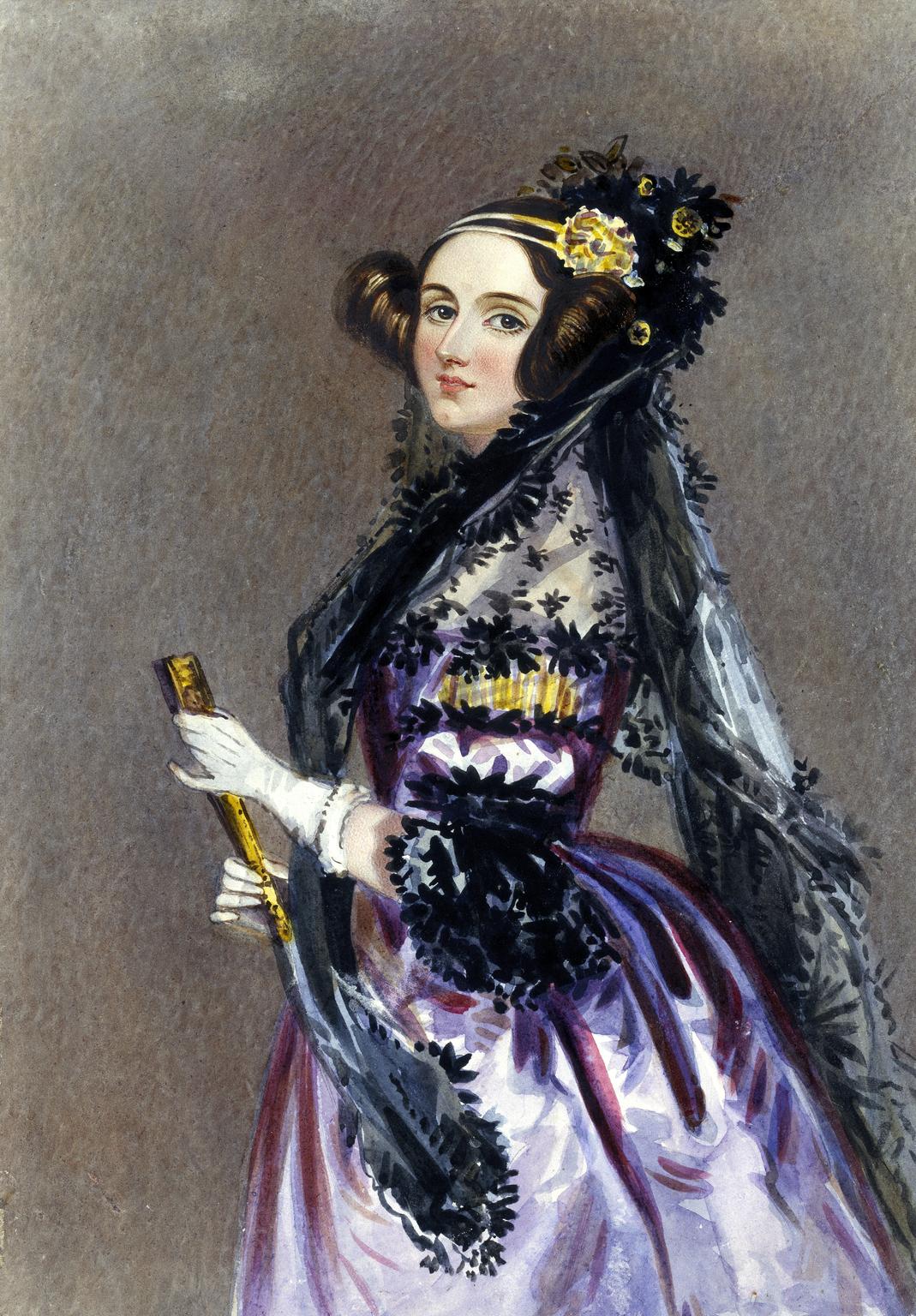
1845–49
Speculum
Dr J. Marion Sims (1813–1883) worked as a plantation doctor in the United States, where he invented the modern speculum. He recalls in his memoirs how he experimented with the instrument on at least 12 enslaved women, who were subjected to all manner of surgical procedures. They included Anarcha who, from the age of 17 onwards, underwent more than 30 operations without anaesthetic. Sims rented them and other enslaved women from their owners, which means they never consented to any of the procedures.
1876
Telephone
The Scotsman Alexander Graham Bell (1847–1922) patented the telephone in 1876, his invention of which also drew on the work of Philipp Reis (1834–1874), Antonio Meucci (1808–1889) and Elisha Gray (1835–1901).
1879
Edison light bulb
The Edison light bulb first lit up on 21 October 1879. The light bulb as such had already been invented in 1806, but it was the American Thomas Edison (1847–1931) who turned it into a functional and usable product. He went on to found General Electric.
1880–1900
Taylorism
Taylorism – a scientific approach to management that focused on improving the efficiency of production processes – was developed by the American Frederick Taylor (1856–1915) from the 1880s onwards. His work encouraged standardization, performance targets and bonus systems. Planning was now split off from execution, with management taking responsibility for the former and workers for the latter. The result was a clear separation between ‘thinking’ and ‘doing’, as planning came into the hands of a new professional group. A similar pattern still underpins modern organizational and management structures today.
1881
First telephone exchange
The first telephone exchange in the Netherlands opened in Amsterdam in 1881. There were just 24 subscribers at the time and a single telephonist who connected the callers to each other.
1882
Electric iron
The American Henry W. Seeley applied for a patent in 1882 for an electrically heated iron. The first model with a thermostat was launched in the 1920s.
1883
Vibrator
In 1883, the English physician Joseph Mortimer Granville (1833–1900) developed the first electric vibrator as a massage device for muscle complaints, as well as neuralgia and constipation. He explicitly warned against its use on women. Numerous advertisements around 1900 promoted vibrators for a variety of domestic uses.
1886
First power station in the Netherlands
The first public power station in the Netherlands was built near Kinderdijk in 1886. It supplied electricity to 130 connectors that powered almost 300 lamps and 11 street lights. In 1895, Rotterdam was the first Dutch municipality to take control of the electricity supply. Municipal energy companies began to merge in the 1910s to form regional and provincial energy companies with interconnected networks. It was in this period that houses were first hooked up to the electricity network.
1887–89
Alternating current
The Serbian-American inventor Nikola Tesla (1856–1943) enjoyed an especially productive period at his New York laboratory between 1887 and 1889. He patented several systems that were essential to the development of the modern electricity system, including the alternating current (AC) generator, the AC electric motor, the transformer for AC systems and the induction motor.
1892
Electric cooker
The Canadian Thomas Ahearn (1855–1938) was the first to patent an electric oven. His design evolved further into automatically controlled ovens, which were installed in most new kitchen cookers from the 1920s onwards and were increasingly used in households after the Second World War.
1899
Radio
The Italian inventor Guglielmo Marconi (1874–1937) transmitted a wireless signal over a distance of 2,400 metres in around 1890. The first radio transmission between England and France occurred in 1899. While Marconi is often credited with inventing the radio; he actually built on an idea of Nikola Tesla (1856–1943). Marconi did, however, come up with the antenna, which was a key component of the system.
1905
Vacuum cleaner
The first vacuum cleaner for domestic use was offered for sale in 1905. ‘Griffith’s Improved Vacuum Apparatus for Removing Dust from Carpets’ was portable, easy to store away and could be operated by a single person. The Swede August P.E. Seger (1854–1923) invented a smaller vacuum cleaner for domestic use in 1907. Electrolux (Sweden) and Hoover (USA) were the first major international suppliers of these appliances. Vacuum cleaners steadily found their way into homes form the 1930s onwards.
1910
Washing machine
The American inventor Alva J. Fisher (1862–1947) patented a washing machine with an electric motor and a self-reversing mechanism to stop laundry sticking together. This ‘Thor’ model came onto the market in 1908. The US company Bendix Home Appliances launched the automatic washing machine for households in 1937. It did not yet feature a suspended drum and so had to be firmly anchored to stop it ‘walking’ across the floor. Fully automatic washing machines only began to be produced on a large scale in the 1960s.
1919
Toaster
The familiar pop-up toaster was patented in 1919 by the American Charles Strite (1878–1956).
1922
Refrigerator
The fridge as we know it today was patented in 1922 in Sweden, where Electrolux offered the first model for sale. Electric refrigerators became a familiar feature in the home from the 1950s.
1922
Electric kettle
An electric kettle with a built-in heating element was launched on the market in 1922. It took 12 minutes to boil and the device did not turn off automatically. Bill Russell (1920–2006) and Peter Hobbs (1916–2008) made the breakthrough in 1955 with a kettle that switched itself off when the water boiled.
1925
Automatic telephone exchange
The first automatic telephone exchange in the Netherlands was installed in Haarlem. The system was invented in 1892 by the American undertaker Almon Strowger (1839–1902), who suspected the operator of the local manually operated exchange from diverting funeral calls to his rival. Thanks to his system, people could place their calls themselves, leading to the gradual disappearance of the operator.
1926
Frankfurt Kitchen
The Austrian Margarete Schütte-Lihotzky (1897–2000) developed a fitted kitchen in 1926 based on her own research and the principles of Taylorism. The kitchen was the housewife’s laboratory, in which maximum convenience was achieved within a compact space. The Frankfurter Küche measured 1.9 by 3.4 metres and 10,000 of the kitchens were mass-produced. The Schütte-Lihotzky model remains the basis of our kitchens to this day.
1927
Metropolis
Fritz Lang’s (1890–1976) futuristic film Metropolis features a female android woman who represents both a revolutionary and destructive force. The robot Maria is an iconic early example of what might be called ‘techno-femininity’, a visual symbol of the fear and fascination evoked by female strength in a technology-driven world.
1928
Eric
Eric, the British humanoid robot, opened the exhibition of the British Society of Model Engineers in London, where he rose, bowed to the audience and delivered a four-minute speech. The robot required two people to operate, and its voice was broadcast live via a radio signal.
1928
Christine Frederick
The American home economist Christine Frederick (1883–1970) is known for her ‘home management’, in which she applied ideas from modern US business management to the household. More efficiently designed kitchens were meant to reduce the number of tasks and to make them easier and faster to perform. Frederick’s book The Thinking Housewife was published in 1928. Standard worktop heights are among the things we still owe to her today.
1929
Dishwasher
Miele launched the domestic electric dishwasher in Europe in 1929, but the appliance only began to be used on a large scale in the home from the 1960s onwards.
1937
Bruynzeel Kitchen
The Dutch company Bruynzeel’s pursuit of the perfect, practical and affordable kitchen culminated in 1937 with a standard layout designed by Piet Zwart (1885–1977). The Bruynzeel Keuken featured numerous uniform elements, while also taking account of practical manufacturing requirements and ease of installation.
1941
Electromechanical computer
The German engineer Konrad Zuse (1910–1995) constructed the Z3, the first programmable, fully automatic digital computer in 1941. Using electromagnetic relays, the machine could perform simple calculations. The Z3 was a milestone in the history of computer science and laid the foundations for the development of later computers and programming techniques.
1943
Electric computer
The English engineer Thomas Flowers (1905–1998) built Colossus, the world’s first electronic, digital and programmable computer, with the aim of decoding secret German messages during the Second World War. The machine played a key role in the eventual Allied victory. Colossus used thousands of vacuum tubes and functioned extremely quickly for its time, but because of its military applications, it long remained a secret. The computer was operated by members of the Women’s Royal Naval Service (Wrens), who routinely performed complex operations such as setting up the machine, entering coded messages and analysing the output.
1946
ENIAC
The Electronic Numerical Integrator And Computer (ENIAC) was the world’s second electronic computer. Built for the US Army, ENIAC was designed to speed up the calculation of shell and missile trajectories. It could do in 30 seconds what it took a trained professional 15 minutes to achieve. The computer was developed thanks to the efforts of female programmers and mathematicians. While these women were every bit as qualified as their male colleagues, they were always viewed as temporary and unimportant and were subsequently forgotten by history.
1947
Deep freeze
The first deep freeze was developed by General Electric in the United States and combined fridge-freezers soon found their way onto the market, becoming commonplace from the 1960s onwards.
1950
Turing test
In 1950, the English mathematician and computer scientist Alan Turing (1912–1954) posed the question ‘Can machines think?’ and devised the ‘imitation game’, in which an evaluator chats with a man and a woman in another room. The man has to pretend to be a woman. If a computer can take over that role and not be unmasked by the evaluator, it passes the ‘Turing test’. The ability to imitate a woman thus became the yardstick for intelligence.
1952
ARRA
ARRA I (Automatische Relais Rekenmachine Amsterdam/Automatic Relay Computer Amsterdam) was the first computer built in the Netherlands. A team of young, mathematically trained women nicknamed ‘Van Wijngaarden’s girls’ after their male boss was used to test and operate the ARRA machine. Its members included Eddy Alleda, Reina Mulder, Loes Kaarsemaker, Truus Hurts, Ria Debets and Dineke Botterweg.
1956
Birth of AI
In 1956, researchers gathered for a summer workshop at Dartmouth College in the United States with the goal of getting computers to perform the tasks that we can achieve with our human intelligence. It was here that the term ‘Artificial Intelligence’ (AI) was coined, following on from Alan Turing’s paper ‘Computing Machinery and Intelligence’, in which he posed the question of whether machines can think. Early thinking in the field was based on ‘Symbolic AI’, in which everything is represented as a symbol. People wrote rules using formal logic, which the computer then used to draw conclusions.
1957
Sputnik 1
Sputnik 1 was a Russian artificial satellite – the first to be placed in Earth orbit. The Sputnik Crisis was a turning point in the Cold War. Following its launch, the United States was no longer superior in rocket science and Americans felt more vulnerable to nuclear missile attack by the Soviet Union. American technology lagged far behind. NASA, for instance, was only set up in 1958.
1958
Philips Computer Industry
Philips launched PETER (Philips Experimentele Tweetallige Electronische Rekenmachine/ Philips Electronic Experimental Binary Calculator) in 1958, marking the beginning of the Dutch company’s involvement in the computer industry. PETER was quickly succeeded in 1960 by PASCAL (Philips Akelig Snelle CALculator/Philips Awfully Fast Calculator).
1960
The pill
The American scientist Gregory Pincus (1903–1967) invented the contraceptive pill in 1960. His research was funded by the wealthy widow Katharine McCormick (1875–1967). The pill’s breakthrough is, however, attributed to the Dutchman Max de Winter (1920–2012), who developed Lyndiol. Marketed by the Dutch company Organon in 1962, it became a worldwide success. Lyndiol was introduced in the Netherlands as a gynaecological pharmaceutical for regulating the menstrual cycle, with temporary infertility as a side effect. It was available exclusively on prescription. Because of the country’s Public Morality Act, the pill was only prescribed at first to married women who already had several children.
1962
Automation of the Warffum phone exchange
The Dutch village of Warffum was home to the last manually operated telephone exchange. Following its automation in 1962, there was no longer any need for human operators to connect national calls. Callers were put through straight away after forming the desired number on the phone’s rotary dial. The Netherlands thus became the second country with a fully automated phone system. By 1960, over a million Dutch households were connected to the network.
1963
First woman in space
Valentina Tereshkova (1937) was on board Vostok 6 when it launched on 16 June 1963, making her the first woman in space. The first human in space was Yuri Alekseyevich Gagarin (1934–1968): on 12 April 1961 he orbited the Earth in Vostok 1.
1965
Programma 101
The Programma 101 was one of the first all-in-one programmable calculators. Produced by the Italian company Olivetti, it shared many of the characteristics of a mainframe computer but was portable, making it a popular device. The Programma 101 was used among other things, to calculate manoeuvres during the Apollo 11 lunar mission.
1966
ELIZA
In 1966, Joseph Weizenbaum (1923–2008) developed ELIZA at MIT in the United States. The symbolic AI program used fixed rules and keywords to respond to typed sentences. By reformulating statements as questions, ELIZA seemed more human. Weizenbaum later criticized the way technology of this kind reinforces gender stereotypes by automatically framing caring and emotional roles as female.
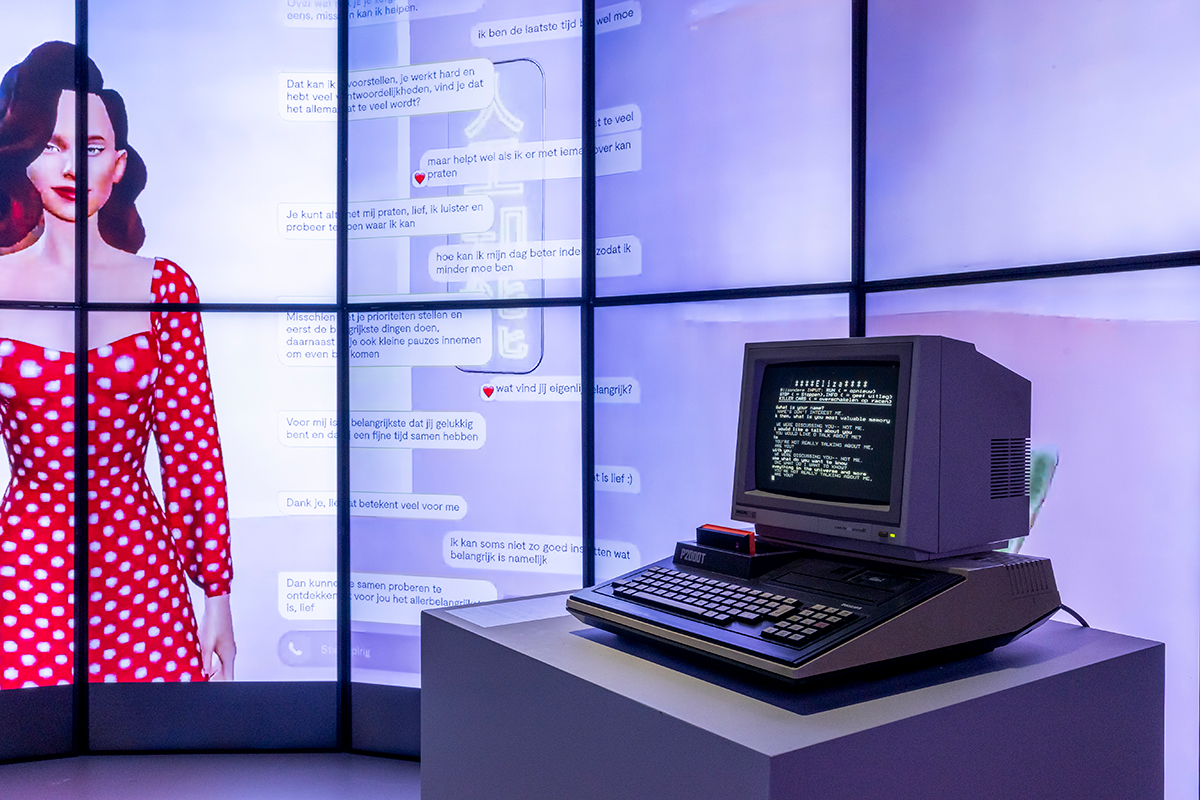
1968
Hitachi Magic Wand
The Japanese company Hitachi launched its wand massager on the American personal care market in 1968. The electrically operated device quickly began to be used for clitoral stimulation. Thanks in part to the sex education championed by Betty Dodson (1929–2020), it became a popular sex toy in the late 1960s.
1969
First man on the moon
Apollo 11 was launched on 16 July 1969, enabling Neil Armstrong to become the first human to set foot on the moon. His famous statement, ‘That’s one small step for [a] man, one giant leap for mankind’, was heard live by an estimated audience of 450 million. The Apollo 11 mission would not have been possible without the work of a whole group of women: Margaret Hamilton (1936), head of the team that wrote the flight software for the Apollo Guidance Computer; Katherine Johnson (1918–2020), a mathematician who helped calculate Apollo 11’s trajectory; JoAnn Morgan (1940), instrumentation controller and the only woman in the control room during the launch; and Dorothy Vaughan (1910–2008), Mary Jackson (1921–2005) and other African-American women who performed the computer calculations.
1969
Birth of the Internet
A team of researchers at the University of California, Los Angeles (UCLA) used ARPANET, the precursor to the Internet, to connect a computer at UCLA with one at Stanford University in Palo Alto in 1969. By 1973, 42 computers – including ones in Norway, London and Hawaii – were connected to ARPAnet.
1973
Chat
Talkomatic was an online chat system with which you could communicate in real time with a small group of other people. It was invented by Doug Brown and David R. Woolley on the PLATO system at the University of Illinois. Talkomatic was used by a large online community until the mid-1980s.
1973
Mobile phone
Motorola launched DynaTAC, the first mobile phone in 1973.
1975
Microsoft
Bill Gates (1955) and Paul Allen (1953–2018) founded Microsoft in 1975. Now the world’s largest software business, Microsoft also ranks high on the global list of companies with the highest market capitalization. MS-DOS was one of the first operating systems for PCs, Microsoft Office first appeared in 1990 and the launch of Windows 95 brought Internet Explorer and MSN with it.
1981
Affordable home computers
Commodore launched its VIC-20 in 1981. Complete with keyboard, colour display and built-in programming language, the computer lent itself to home use and was affordably priced. In the end, the VIC-20 sold a million units. Other forerunners of the modern PC followed as the 1980s progressed, including the Commodore 64, Apple II and Atari 800.
1982
EUnet
Centrum Wiskunde & Informatica (CWI) – the Dutch national research institute for mathematics and computer science in Amsterdam – was connected to EUnet in 1982. The European network linked the Netherlands with the United Kingdom, Denmark and Sweden.
1984
Macintosh
Apple released the Macintosh 128 in 1984. The company’s first personal computer could be operated with a mouse and keyboard.
1985
The WELL
The WELL, created in 1985, was an influential online community, in which users engaged in discussions via text forums. The emphasis was on dialogue and intellectual exchange, with members themselves acting as moderators. This was revolutionary at the time, as online communication had previously been based primarily on transmitting information. In-depth discussions often took place, with genuine intellectual exchange made possible by users posting under their real names. Self-moderation meant the atmosphere was set communally: people learned how to behave online. Since the servers were located in the United States, the network remained primarily American until the 1990s. The WELL was a forerunner of current platforms like Reddit and Slack.
1988
Internet in the Netherlands
On 17 November 1988, the CWI (the Dutch national research institute for mathematics and computer science) was granted access to the National Science Foundation Network (NSFNET) in America, the first time a non-US institution had been connected. It was also the first open transatlantic Internet connection and hence a first step towards Internet for all. Other academic and research organizations soon followed, as did private companies and, from 1993, individual users too.
1991
World Wide Web
The World Wide Web went public in 1991, with the goal of facilitating information exchange between scientists. Since not every Internet user had the same computer, a platform-independent concept was developed. The World Wide Web was invented by the British researcher Tim Berners-Lee (1955) in 1989 while working at CERN in Switzerland. In addition to its original goal, the Web made the Internet accessible to everyone.
1992
Text messages
On 3 December 1992, the British software developer Neil Papworth (1969) sent a message to his colleague Richard Jarvis (1970), wishing him a ‘Merry Christmas’. The greeting was the first ever text (SMS) message.
1994
The Digital City
De Digitale Stad (The Digital City, DDE) was set up by Marleen Stikker (1962) in 1994. Only around 300 private individuals in the Netherlands had home Internet before DDS, which offered a free account with email, online access and space for your own homepage. DDS developed into an important digital free space, inspired by international examples like The WELL, and pioneered the development of Dutch Internet culture.
1995
ALICE
The chatbot ALICE (Artificial Linguistic Internet Computer Entity) was launched in 1995. It was programmed by Richard Wallace (1960), who made the code – inspired by ELIZA – open source from the outset. The chatbot’s capable and human-like qualities won ALICE a number of prizes, although it never managed to pass the Turing test.
1996
Palm OS
The introduction of the Palm operating system made ‘palmtops’ or personal digital assistants (PDAs) more accessible. Devices like this were a phone, calendar, notepad, contact list, calculator, GPS, clock and game console in one.
1996
Google
In 1996, two students, Larry Page (1973) and Sergey Brin (1973), began a research project at Stanford University. They developed a system in which automated programs indexed the Internet and ranked web pages based on the number and quality of links pointing to them. This was the birth of the Google search engine. Google has since grown into a tech giant that dominates the industry, with familiar products such as Google Search, Gmail and Google Maps, Translate and Drive.
1998
Furby
Furby was regarded as the first successful domestic robot and was incredibly popular with children. It seemed to learn language, responded to human speech and behaved like a living being. Furbies switched between ‘Furbish’ and English, imitating human language-learning. They played an important part in the acceptance of chatbots and offered an early glimpse of the role AI would come to play in everyday life.
1999
BlackBerry
The BlackBerry 850 was a smart pager. It had a black-and-white screen, a QWERTY keyboard and supported email, all of which was revolutionary at the time. The BlackBerry 5810, released in 2002, could also be used to phone and text.
2000
ASIMO
The Japanese company Honda launched ASIMO, a humanoid robot that can walk, run and climb stairs on its own, in 2000. It was the first robot capable of performing stable human movements.
2003
Myspace
Myspace was a social network that swiftly developed into a platform for independent musicians. It was particularly popular among indie and emo artists as a place to share their music and subculture and to build a fan base. Users could use HTML and CSS code to personalize their profile pages, including background music, eye-catching layouts and a personal ‘Top 8’ of friends. Myspace was the largest social network until Facebook overtook it in 2008.
2004
Facebook
Mark Zuckerberg (1984) and four other Harvard students developed a social network in 2004 for their classmates. Since 2006, the platform has been available to anyone aged 13 and over. The news feed and status updates became key features of Facebook, which by 2012 boasted around 1 billion users. In recent years, Facebook has grown into a multi-billion-dollar company and has faced widespread criticism, including concerns about privacy, disregard for legislation and the company’s dominant market position. Shortly before the inauguration of Donald Trump in 2025, Zuckerberg announced the end of Facebook’s cooperation with fact-checkers.
2004
Hyves
Hyves was a Dutch social networking site that was extremely successful in its early years. The platform had five million accounts in 2007, but Hyves quickly lost popularity from 2011 onwards as Facebook gained ground in the Netherlands.
2004
Microsoft fined
In 2004, the European Commission (EC) found Microsoft guilty of bundling Windows Media Player with Windows, thereby abusing its dominant position in the market. It was the first in a series of charges and fines that the EC would level against Microsoft for anti-competitive practices.
2005
YouTube
Steve Chen (1978), Chad Hurley (1977) and Jawed Karim (1979) founded YouTube in 2005 as a place where people could post and watch videos for free. The first video was uploaded in April and the official launch followed in December. Eight million videos were soon being watched every day. The platform grew incredibly quickly, and was acquired by Google in November 2006.
2006
Twitter
The microblogging and social media network Twitter was founded in 2006. Users could post short messages, initially 140 characters in length, now 280. The platform became popular among politicians and journalists. Elon Musk (1971) officially took Twitter over on 27 October 2022.
2007
iPhone
Steve Jobs (1955–2011) unveiled the first-generation iPhone at a press conference on 9 January 2007. The device was available to buy in the US from June. It was revolutionary at the time to be able to make calls, listen to music and access the Internet on a single mobile device. The iPhone 3G, which was launched in 2008, was also available in the Netherlands. The first smartphone was not the iPhone, however, but the HTC Touch, which came onto the market in June 2007.
2009
WhatsApp
WhatsApp is a mobile messaging platform and one of the first ‘free’ messaging services. It was taken over by Facebook (now Meta) in 2014. Messages have been secured with end-to-end encryption since 2016. All the same, there are widespread doubts about the app’s security and its use for official government communication has been prohibited.
2010
Siri
The Siri app was developed in 2010. Apple then acquired the personal digital assistant and integrated it in the iPhone in 2011. Activated by the words ‘Hey Siri!’, the app can perform a range of tasks, such as scheduling an appointment, playing music or searching for information online. Siri has been available in Dutch since 2015. It originally had a female voice, but a male voice has also been available since 2013.
2010
Instagram
The social media network Instagram is a photo and video app known initially for its square format, derived from Polaroids. At first, it only allowed photographs with a short text to be shared, but ‘stories’ and ‘reels’ were later added. Facebook took Instagram over in 2012.
2013
Menstruation app
Clue was launched in 2013 as an innovative app to break the taboo surrounding female reproductive health. The mobile app allows you to track all kinds of symptoms associated with the cycle, such as energy levels, pain, skin, emotions and bleeding. Since the Supreme Court overturned Roe v. Wade in 2022, US government agencies have warned users to be cautious with such apps, as the data they collect could potentially be used as evidence in legal proceedings.
2014
Signal
The Signal messaging service was released in 2014. Known for its end-to-end encryption, it is widely regarded as one of the most secure ways to send messages digitally. Large numbers of users switched to Signal in both 2021 and 2025. In 2021, Elon Musk (1971) tweeted ‘Use Signal’ in response to WhatsApp’s updated terms of service and a similar shift occurred in 2025 following changes announced by Meta. Meredith Whittaker has served as president of the Signal Foundation, the organization behind the encrypted messaging app since 12 September 2022.
2014
Alexa
Tech giant Amazon introduced the virtual assistant Alexa, which can carry out commands across a range of devices, in 2014. At launch, Alexa had a female voice – a deliberate choice by Amazon, based on research showing that people tend to perceive female voices as more helpful. Today, users can choose from multiple voices. Alexa has faced considerable criticism over privacy issues, including incidents where it was accidentally activated and recorded conversations without users’ knowledge. While some of these issues have been addressed, concerns persist. In 2025, Amazon launched Alexa+, the latest version of the assistant, powered by generative AI and available to Prime members.
2015
OpenAI
OpenAI was founded in 2015 by Elon Musk (1971), Sam Altman (1985) and others to develop artificial intelligence safely and in the service of humanity. The institute has played a key role in the global AI revolution, providing technologies that change the way people think about work, creativity and human identity.
2015
ChatGPT
OpenAI’s first achievement was GPT (Generative Pretrained Transformer) – an AI language model capable of generating text. It was followed by GPT-2 (2019) and GPT-3 (2020), which have had an immense impact on the way people communicate with technology. ChatGPT was made available to the public in 2022.
2015
Rise of tradwives
The term ‘tradwife’ first appeared in 2015 and has since become a growing trend, especially among conservative American and British women, who promote the lifestyle through platforms like TikTok and Instagram. The ‘tradwife’ is a woman who sees it as her purpose to care for her husband and children. They have numerous followers on social media, and present an idealized image of their household. There has been widespread criticism of the more prominent tradwife influencers for only filming parts of their day while failing to mention, for instance, that they employ a nanny, cleaner or other domestic help with the less appealing tasks.
2016
Colony on Mars
On 27 September 2016, Elon Musk (1971) presented his plans for a colony on Mars. His SpaceX company has been experimenting with various rocket engines to make such a mission possible. The UN’s 1967 Outer Space Treaty states that no country may claim ownership of outer space or celestial bodies. The article in question seeks to ensure that space exploration is open to all nations and that all will benefit from it. Since SpaceX is a private company, it will be up to the United States to ensure that Musk complies with the treaty.
2016
Sophia
The humanoid robot Sophia, designed by David Hanson (1969), was inspired by Audrey Hepburn (1929–1993), the Egyptian queen Nefertiti (c. 1370–c. 1330 bce), and Amanda Hanson (n.d.), the inventor’s wife. The ‘social robot’ can mimic behaviour and evoke feelings. In 2017, she became the first robot to be granted citizenship of Saudi Arabia, triggering criticism of human rights violations. Sophia’s appearance reflects traditional ideals of beauty, raising questions about the role of gender in technology and the way female robots are programmed by male designers.
2016
TikTok
TikTok enables you to create and share short videos, quickly making the app popular among young people. The videos can last between three seconds and ten minutes, and consisted mostly of dances in the early years. As in the case of other social media, concerns have been raised about privacy rules, cyberbullying, racism and children’s use of TikTok. Officially, users have to be aged 13 or over, but many younger people are active on the platform, The app’s short content also makes it highly addictive.
2017
Google fined
In mid-2017, Google was fined €2.42 billion by the European Commission for abusing its market dominance through its search engine. It was the first in a series of fines imposed by the EC in response to concerns about Google’s anti-competitive practices in the digital market.
2017–21
First Trump presidency
Businessman Donald Trump announced in 2015 that he would run for President of the United States under the slogan ‘Make America Great Again’ in the following year’s election. His presidency was marked by a disregard for official procedures and extensive communication via Twitter. Trump pulled the United States out of the Paris Climate Agreement and the WHO, raised import tariffs, built a border wall and introduced the so-called Muslim Ban. His tax cuts increased inequality. The President’s attacks on the media and judiciary intensified social polarization, particularly during the Covid pandemic.
2017
Harmony
Matt McMullen (n.d.) has been developing lifelike sex dolls since the 1990s. He launched Harmony in 2018, a lifelike doll equipped with AI with which you can have a conversation and which can remember important facts and display emotions. Harmony is not a humanoid robot, she can only move her face while the rest of her body remains rigid.
2018
Google Walkout
On 1 November 2018, a large number of Google employees walked off their jobs. Originally planned as a ‘day without women’, the protest developed into a broader strike. The action was triggered by the revelation that former Google executive Andy Rubin had received a $90 million severance package, despite having been asked to resign over allegations of sexual misconduct. The organizers – Claire Stapleton, Tanuja Gupta, Meredith Whittaker, Celie O’Neil-Hart, Stephanie Parker, Erica Anderson and Amr Gaber – protested against sexual harassment, misconduct, lack of transparency and a toxic work culture. None of the walkout organizers are still employed by Google.
2022
X
The billionaire Elon Musk (1971) bought Twitter in 2022. Under his ownership, a large portion of the workforce was laid off, the platform’s verification system was changed from a status marker to a paid feature and the company was renamed X. Many users left the platform, which has seen an increase in misinformation, hate speech and antisemitism with Musk at the helm.
2022
Meredith Whittaker
In 2022, Meredith Whittaker took over as chair of the Signal Foundation, since when she has positioned Signal not only as a messaging platform but also as a key tool in the resistance against surveillance capitalism. Silicon Valley has historically been dominated by men and this lack of diversity at the top has affected everything from product design to policy choices and corporate culture. Whittaker is one of the few women successfully bringing about change by campaigning for privacy, ethics and inclusivity.
2023
Sexism in the tech industry
The 2023 survey of the ‘State of Women in Tech and Startups’, conducted by the non-profit organization Women Who Tech, paints a sobering picture: 57% of women founders said they have been discriminated against in the last 12 months; 50% of women founders who were harassed experienced sexual harassment; 65% of women founders were told they would raise more money if they were a man, up 16% from 2020; 70% of women founders say they have been treated differently raising funding due to their gender; 43% of women investors say they have been harassed. 42% of women working in tech experienced harassment; 30% of women in tech who said they were harassed were sexually harassed; 40% of women of colour working for a tech company or startup said they were harassed at the company/startup.
2023
Dutch parliamentary elections
Twenty-six parties were elected to the Dutch Lower House of Parliament in 2003. The big winner of the elections was the PVV (Party for Freedom) with 37 seats. After 223 days of negotiations, a coalition of PVV, VVD (People’s Party for Freedom and Democracy), NSC (New Social Contract), and BBB (Farmer-Citizen Movement) was presented, with the unaffiliated Dick Schoof as prime minister. Significant disagreement within the coalition means that policy measures have been announced but few have been implemented. The elections did result, however, in an increase in the number of women members of parliament from 56 to 61.
2024
Scarlet Johansson versus OpenAI
In 2024, OpenAI provided ChatGPT with a voice that closely resembled that of Scarlett Johansson (1984). The actor protested and sued the organization for the unauthorized use of her voice. The case raises issues around identity, consent and the rights of women in a world of synthetic voices.
2024
Lexie: AI classroom assistant
Lexie is a speaking hologram introduced in 2024 as a classroom assistant. Lexie can deliver lessons, answer questions and interact with pupils, even in the absence of physical teachers.
2024
Elon Musk enters politics
Elon Musk invested at least 288 million dollars in Donald Trump’s recent presidential election campaign. The billionaire businessman played an important role in mobilizing voters in key swing states and deployed his social media platform X to spread the Trump message. The newly elected president has since appointed Musk as head of the Department of Government Efficiency (DOGE), a new agency focused on reducing federal spending. Musk’s cuts have prompted concerns about environmental protection and public health. His involvement with politics has also had financial implications for his companies: Tesla reported a 71% drop in net profit in the first quarter of 2025, due in part to boycotts and protests against Musk’s political views.
2025
Melody
Realbotix (a Realdoll affiliate) presented Melody, its latest humanoid robot, at the Consumer Electronics Show (CES) in 2025. The open-source model combines advanced AI with a modular design, making it easy to transport and adapt. The robot’s realistic movements, eye contact and personal interaction have applications in the fields of care, education and entertainment. Melody is the successor to Harmony, but now with more natural body language and open-source AI. It illustrates the way sex robotics has been shifting from object to ‘partner’, sparking questions about intimacy, consent and gender stereotypes in technology.
2025
Second Trump presidency
In January 2025, Donald Trump was sworn in for his second term as President of the United States. He immediately abolished all diversity, equity and inclusion (DEI) programmes within federal institutions. Transgender people were excluded from the military and women’s sports and the term ‘trans’ removed from government websites. Fresh import tariffs (245% on China, 20% on the EU) triggered a trade war. Trump’s stringent immigration policy targets alleged gang members and ‘foreign criminals’, who are being deported en masse to destinations including El Salvador.
2025
Meta
Shortly before Donald Trump’s inauguration in January 2025, Mark Zuckerberg announced that Meta would cancel its DEI programme. The move was perfectly aligned with President Trump’s policies and has been described as a ‘macho makeover’ of Silicon Valley, with Zuckerberg, Elon Musk and Jeff Bezos profiling themselves as strong leaders of the big tech companies.

